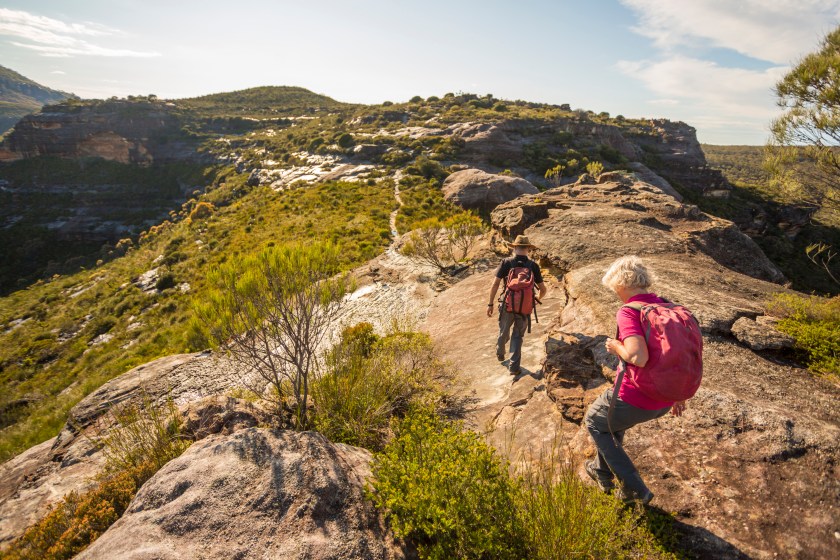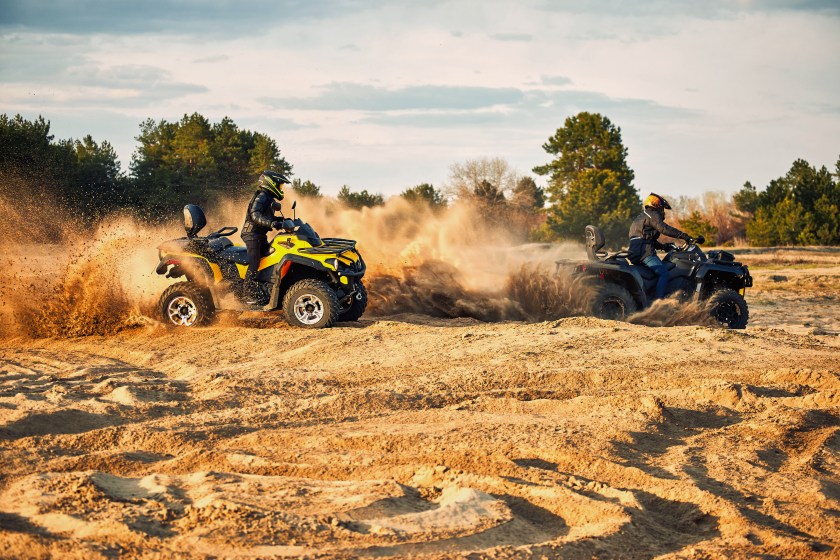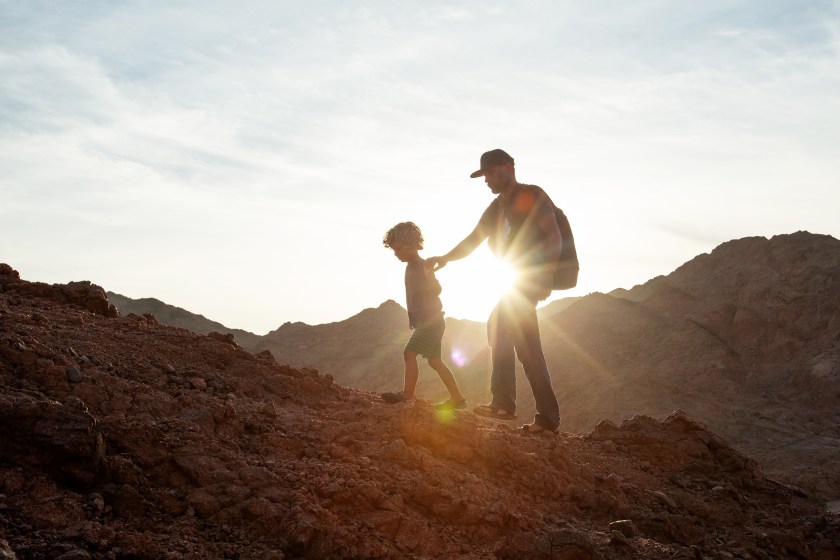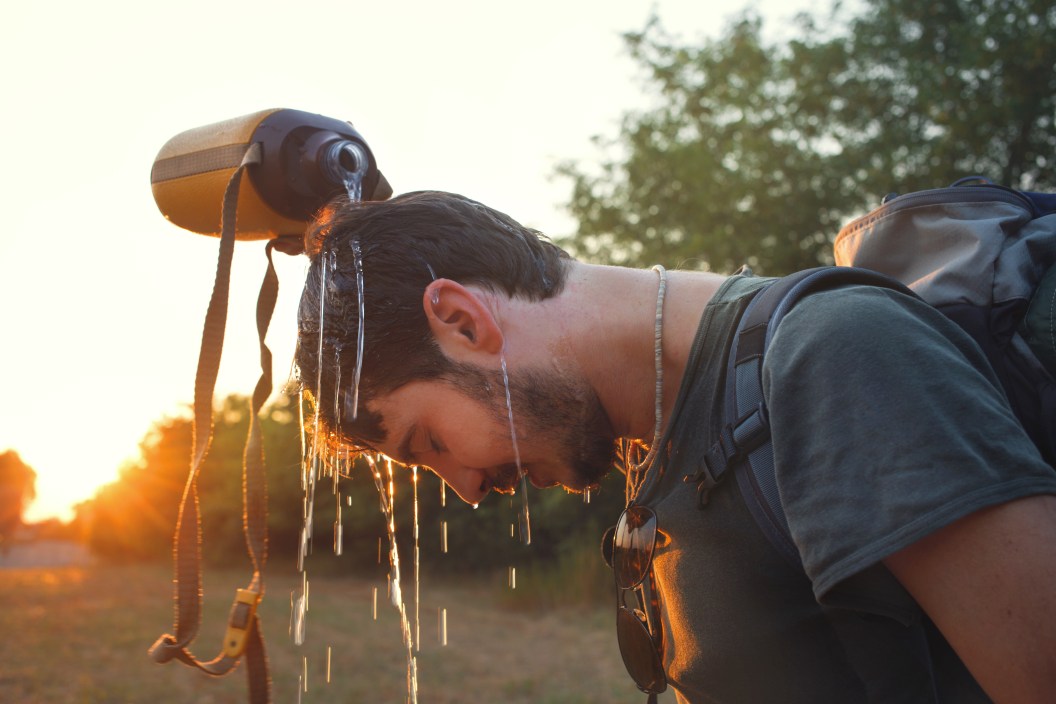If you were lucky enough to dodge the poor air quality from wildfires that made being outdoors this summer near impossible, there's a good chance you're dealing with another threat now: dangerous heat waves.
We all know Arizona and Texas has been setting unwelcome records for high temps, but even the Northwest is experiencing an intense summer heat wave with Portland, Oregon just clocked a new August record temp of 108°F.
And the heat is no joke: There have been at least seven potential heat-related deaths at national and state parks alone this summer, the New York Times reports.
So is it safe for you to (ad)venture outdoors? We spoke with an exercise physiologist to break down the temperature at which you should delay your plans or proceed with caution stay indoors.
What's the Risk of Hot Weather, Really?

Getty Images, davidf
With a high heat index, your heart rate is often higher as you begin to sweat and dehydrate, explains N'Namdi Nelson, C.S.C.S., an exercise physiologist at NYU Langone's Sports Performance Center. This can cause a few serious risks:
- You're more likely to seriously injure yourself. The heat can cause you to feel lightheaded, dizzy, and nauseous, Nelson says. When you're on a steep trail or in the unruly backcountry, those side effects could make you more likely to fall or harm yourself in other ways.
- You risk heat exhaustion, even heat stroke. Adventuring in too-hot conditions can cause when your body lose so much water and salt via sweat that you risk heat stress or heat exhaustion if you're not replenishing the lost fluids well enough, says Nelson. In severe circumstances, there's a risk of heat stroke, a medical emergency in which your body is unable to regulate your core temperature, he says. Victims of heat stroke may experience profuse sweating, confusion, loss of consciousness, and seizures, and it can be fatal if you don't receive treatment, per the CDC.
If you have certain medical conditions, the risk of a high heat index is even greater: For example, folks with high blood pressure are more prone to heat exhaustion. The same goes for people with a higher weight. "The more weight you carry, the more heat your body retains," says Nelson. "This can make it more difficult to cool your body down."
How Hot is Too Hot to Be Outside?

Getty Images, Bondariev
Generally, a heat index of 104°F is considered unsafe for prolonged exposure, says Nelson.
But even if the heat index is below that 104°F cutoff, you may want to limit your time exploring outside if it's a bright, cloudless day since the index is based on shady, light wind conditions, and full sunshine can actually increase heat index values by up to 15°F, according to the Occupational Safety and Health Administration (OSHA) and The National Institute for Occupational Safety and Health (NIOSH).
If you're planning on heading outdoors for a mid-day hike or fishing trip this summer, make sure to first check your area's heat index, or how hot it feels when relative humidity is taken into account.
Even if the air temperature registers below that level, you may have trouble keeping yourself cool due to the effects of high humidity. "Our bodies produce sweat as a way to cool down," he says. "As we sweat, the water on our skin evaporates into [the] air, but this process slows down as the humidity increases [because] the air is more saturated with water already."
How to Stay Safe Adventuring During Heat Waves

Getty Images, kapulya
First things first: Ensure you have reliable information about the heat index and any risks in your area. OSHA and NIOSH co-produced a handy Heat Safety Tool app that gives current conditions as well as a 12-hour hourly forecast based on your geolocation. When in doubt, push back your plans until cooler temperatures arrive.
That said, as long as the heat index remains below 104°F, you may not need to cancel all your outdoor adventures. Just make sure to keep a few safety tips in mind before you head to the lake or hunting ground.
1. Be Conscious of Warning Symptoms
Fact: You can develop heat exhaustion and heat stroke regardless of the temperature and humidity outside.
While you're exploring, consistently check in with yourself and your friends and look for signs of heat illness. A person with heat exhaustion may be nauseous, vomiting, and fatigued and have pale, clammy skin and increased sweating.
In the case of heat stroke, the person may lose consciousness, and their core body temperature will rise above 104°F, says Nelson. Medical care is essential. "This will include lowering the body temperature by cold bath, cold packs, or other available techniques," he says.
If you or your hiking buddy show any signs of heat stress, move into a cooler, shaded area, remove any unnecessary clothing, and encourage hydrating with water or sports drink containing electrolytes, Nelson advises. Seek medical attention if you or your adventure partner has an elevated body temperature and/or is continuously vomiting.
2. Dress Appropriately
When picking out your hot-weather hiking clothing, choose light colors, as dark-colored apparel can trap heat, says Nelson. You'll also want to opt for moisture-wicking fabrics that help your body's cooling system: Sweat will be able to escape through the fabric and evaporate, helping to keep you cool, he says. In places with exposure to the sun, you'll also want to bring your own shade in the form of a wide-brimmed hat.
3. Drink Plenty of Fluids
As you're no doubt aware, sweating is your body's main method of maintaining your body temperature. But perspiration depletes water as well as salt and minerals (a.k.a. electrolytes) that are essential for balancing your body's hydration, managing your pH level, moving nutrients into and waste out of your cells, and supporting your nerves, muscles, heart, and brain, according to the National Library of Medicine.
To prevent dehydration and an electrolyte imbalance, the CDC recommends you drink more water than usual—even before you begin heavily sweating—and consider sipping on a sports drink to replace those electrolytes.
4. Take Your Time
It may be tempting to hike as fast as possible to the scenic viewpoint, but in a heat wave, you're best off moving at a slow, sustainable pace, especially if you're not used to being active in hot weather. In fact, if the estimated time for your selected trail is long or the trail is rated as challenging, you may consider starting very early to give yourself extra time to get there and back—or picking a shorter, easier route altogether.
Typically, the more fit you are, the better your body can thermoregulate—or maintain an appropriate body temperature—says Nelson. However, if you notice your heart is pounding or you're gasping for breath, stop your activity, get into a cool, shady area, and rest. It may take you extra time to get to your destination, but staying safe makes it well worth the wait.
READ MORE: Watch Out: Snakes Are On the Move and More Likely to Bite in Hot Weather




